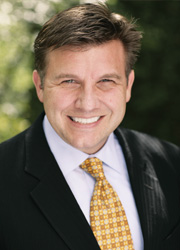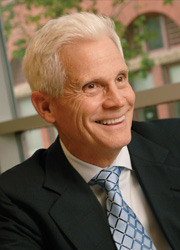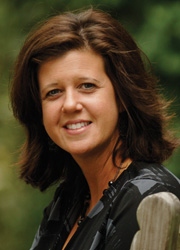 To the Owen Community,
To the Owen Community,
It’s been five years since I stepped up to lead the Owen School—a year as interim Dean and four in a full-time capacity. Despite the fact that we currently find ourselves at an economic low point, I can’t help but reflect favorably on the past five years. It’s been a tremendous period of personal and professional growth for me and of remarkable endeavors and accomplishment for the Owen School and those who comprise our community.
Today, however, my highest priority is not to reflect upon the past; rather I’d like to pause and look ahead to the next five years.
These are transformative times.
Pundits and experts, far smarter than I, are finding it challenging to predict our future in this time of economic upheaval. Surely we will look back on this time as a defining moment in history. We are in a period in which established business models—those for publishing, entertainment and retail, to name a few—are changing and crumbling. Yet, in that destruction lies tremendous opportunity to innovate and create.
Additionally, the awareness and concern for our environment, the desire for sustainable practices and our knowledge of the interconnectedness of peoples around the world will—perhaps once and for all—reduce our passions for consuming and make us more conscious of our impact on society and the world.
For the baby boomer generation (of which I am on the leading edge) and others already in the leadership positions, this is truly the time to begin to embrace the unknown and to be open to exploring that which we do not currently understand. Only by doing so will we survive—and, hopefully, thrive—as we make some necessary transitions.
For those in their graduate school years, this will be a period of personal definition as you choose your paths for the foreseeable future. Those who hustle, who persevere, will invent their own opportunities.
What lies ahead for Owen?
We will move Owen into the Top 20 graduate business schools in North America. To achieve this goal, we will continue to differentiate our MBA and other programs and attract top faculty and students. It will require a united effort by everyone—faculty, alumni, students and staff, alike—but we are up for this challenge.
Drucker’s “knowledge economy” will be passé. Owen will be a market-focused institution, creating not just knowledge but solutions.
Owen’s strong health care offerings will position us as the premier school for health care management education nationally and, hopefully, globally.
Our stellar finance faculty will help define the financial markets of the future, learning from the past and present to identify and recommend regulatory and free market solutions to the shortcomings of current times.
We will be a far more global school, using technology to reach well beyond our physical space as well as innovative partnerships and programs to bring the world into our classroom.
We will lead in defining the responsibility of the business world to society.
Social entrepreneurship, ethics, and addressing our responsibility to society, will find equal standing in our curricula.
We will remain a small and intimate school. Students and faculty will continue to choose Owen for our uniquely collaborative and supportive culture.
Our school will succeed because we will make a difference by shaping our communities, our businesses, our society and the world.
Are these mere dreams or reality? Will we hunker down and try to protect the past or will we choose the opportunity to transition to a bright—but different—future? It is our collective choice to make. I hope and trust you will join me in the decision to embrace the future and all it holds.
Warm regards,
James W. Bradford
Dean, Vanderbilt Owen Graduate School of Managment
Ralph Owen Professor for the Practice of Management






















